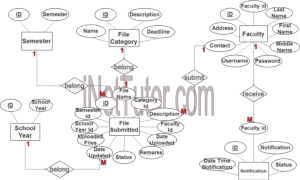Face Recognition Attendance System ER Diagram
This article will walk you through the process of creating an entity relationship diagram, often known as an ERD, for the project entitled Face Recognition Attendance System.
Face Recognition Attendance System Description
In computing, the Face Recognition System is a computer program that is designed to recognize faces in digital photographs. The tool may be used to identify people in photographs, surveillance footage, or any other digital images that have been captured by the user.
The Face Recognition System recognizes faces in photos through the use of a variety of algorithms. The algorithm can recognize faces that have been rotated sideways or upside down, as well as faces that have been partially concealed by other objects in the image, among other things.
In order to run the Face Recognition System, you’ll need a computer with a high-end graphics card and a powerful processor. The Face Recognition System is not available on all computers, and it may necessitate the installation of additional software on the computer in order to function properly.
To track the attendance of firm employees, this project will design a face recognition attendance system that will track the attendance of employees in a company. The device will use a camera to take photographs of employees as they arrive and depart from work, and it will use facial recognition software to identify personnel and keep track of their time spent at the workplace. This solution will improve the accuracy and efficiency of attendance tracking while also assisting the organization in protecting its assets by ensuring that personnel are present at work on a regular basis.
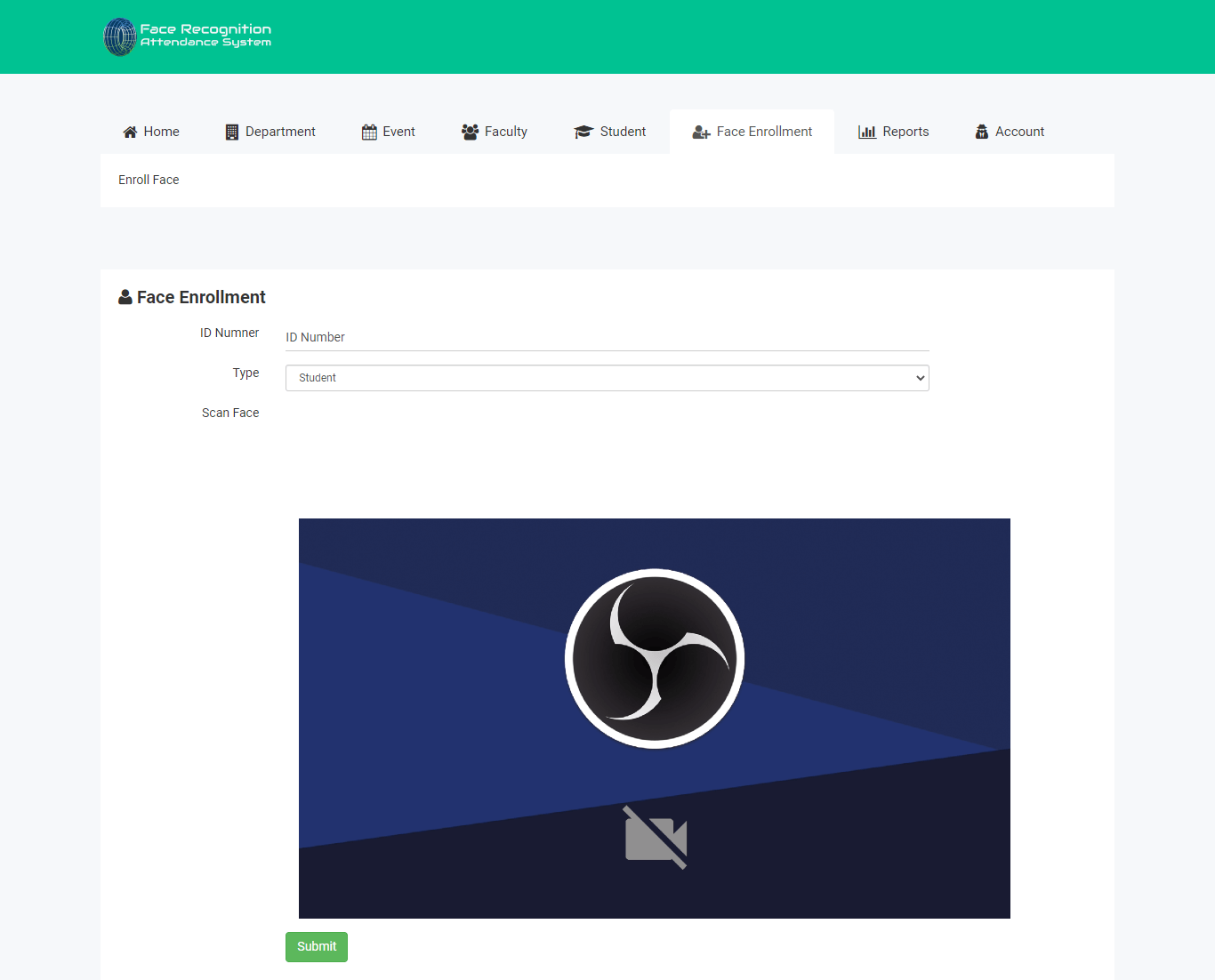
Employers must track their employees’ attendance in order to verify that they are performing their jobs efficiently. Attendance is a crucial component of employee productivity, and it is critical that employers do so. The failure to attend appointments or to report to work can result in a loss of revenue for businesses, as well as major safety concerns if individuals are not present at their places of employment.
When it comes to tracking employee attendance, face recognition software is a dependable tool that’s growing increasingly popular among organizations. The accuracy and efficiency with which this software has been demonstrated in the identification of individuals, and it may be used to track the attendance of employees and students if it is implemented in schools and colleges.
ERD
This is the first phase of the development of the Face Recognition Attendance System, and it will serve as the foundation for the creation of the actual database that will be used by the system in the future. Face Recognition Attendance System
Using the Face Recognition Attendance System as an example, we will develop an entity relationship diagram and detail the methods that must be followed in order to finish the diagram generation. Starting with the symbols that are employed in the ER Diagram, let us discuss their meanings.
The rectangle shape represents the entity that is being shown in the diagram below. At some point in the future, we will use this entity to make a database table for our Face Recognition Attendance System.
The shape of a diamond can show how a relationship works, like how it fits together. A lot will depend on this. A primary key to foreign keys relationship is often the best way to do this.
The shape of the oval is a way to show the attribute for the entities specified. Columns or fields will be added to each table in the Face Recognition Attendance System, and this will be the case.
We will follow the 3 basic rules in creating the ER Diagram.
- Identify all the entities.
- Identify the relationship between entities and
- Add meaningful attributes to our entities.
Step 1. In the Face Recognition Attendance System we have the following entities:
- Department
- Student
- Attendance
- Face Recognition Enrollment
- Event
- Admin Account
The Face Recognition Attendance System is divided into six tables, according to our methodology. As we work on the Face Recognition Attendance System database schema, here is what our database tables will look like as we progress. The database tables will be made up of these entities.
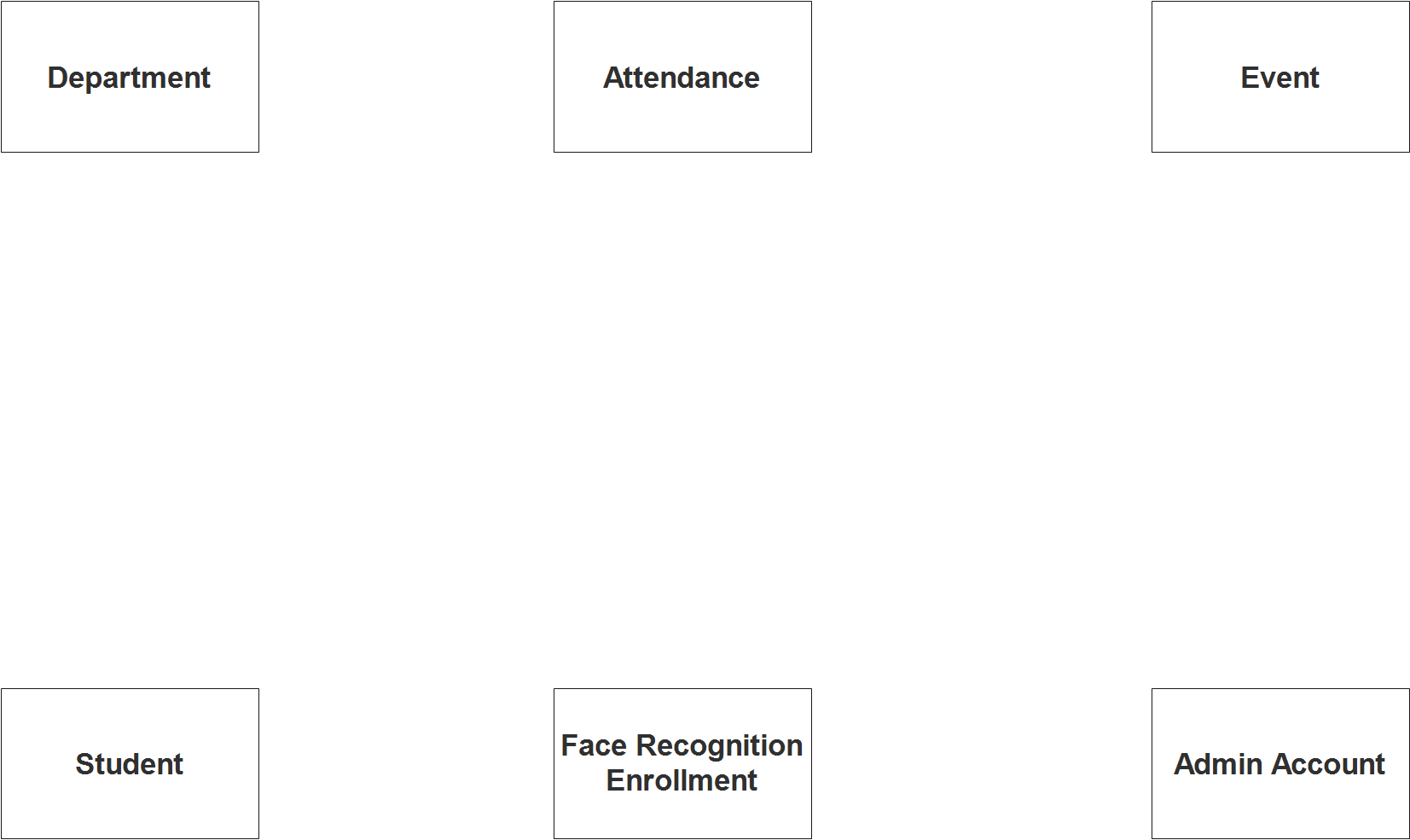
Step 2. After we have specified our entities, it is time now to connect or establish a relationship among the entities.
- The student or employee belongs to a department (1 to 1 relationship).
- The student can only be registered once in the face recognition system (1 to 1 relationship).
- The administrator account processes the enrolment of students and employees in the face recognition system (1 to many relationship).
- The event information is attached to the attendance module of the system (1 to 1 relationship).
- The information of the student or employee is recorded in the attendance module of the project.
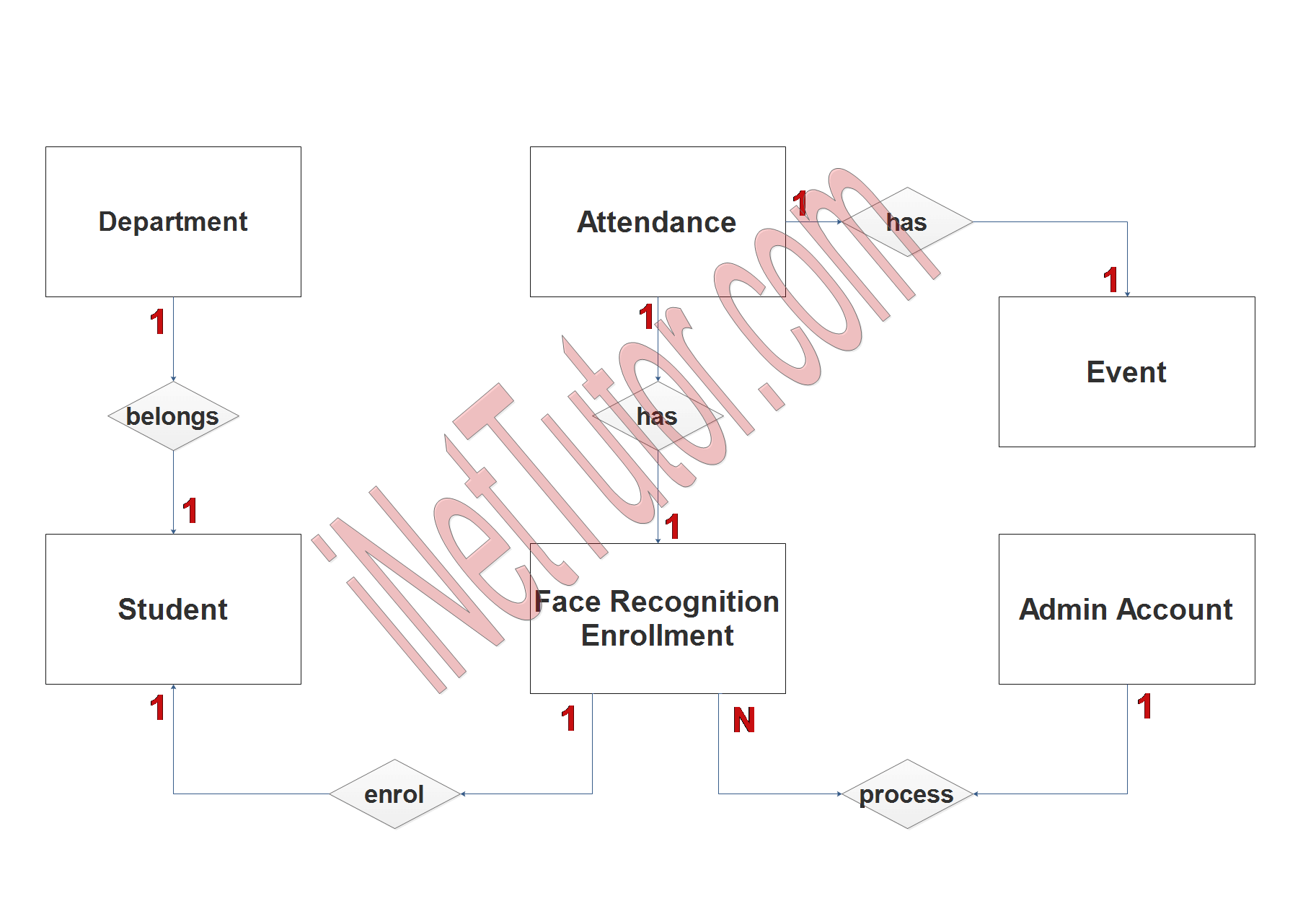
Step 3. The last part of the ERD process is to add attributes to our entities.
Department Entity has the following attributes:
- Department ID – primary key represented with underline
- Department Code
- Department Name
Student Entity has the following attributes:
- Student ID – primary key represented with underline
- Student ID Number
- Last name
- First name
- Middle Name
- Gender
- Department ID – foreign key
- Contact Number
- Username
- Password
- Account Status
Attendance Entity has the following attributes:
- Attendance ID – primary key represented with underline
- Event ID – foreign key
- Enrolment ID – foreign key
- Date
- Time
Face Recognition Enrollment Entity has the following attributes:
- Enrollment ID – primary key represented with underline
- ID Number
- Face Image
- Type
- Admin ID – foreign key
Event Entity has the following attributes:
- Event ID – primary key represented with underline
- Event Name
- Description
- Date
- Upload Banner
Admin Account Entity has the following attributes:
- Admin ID – primary key represented with underline
- Username
- Password
- Name
- Contact
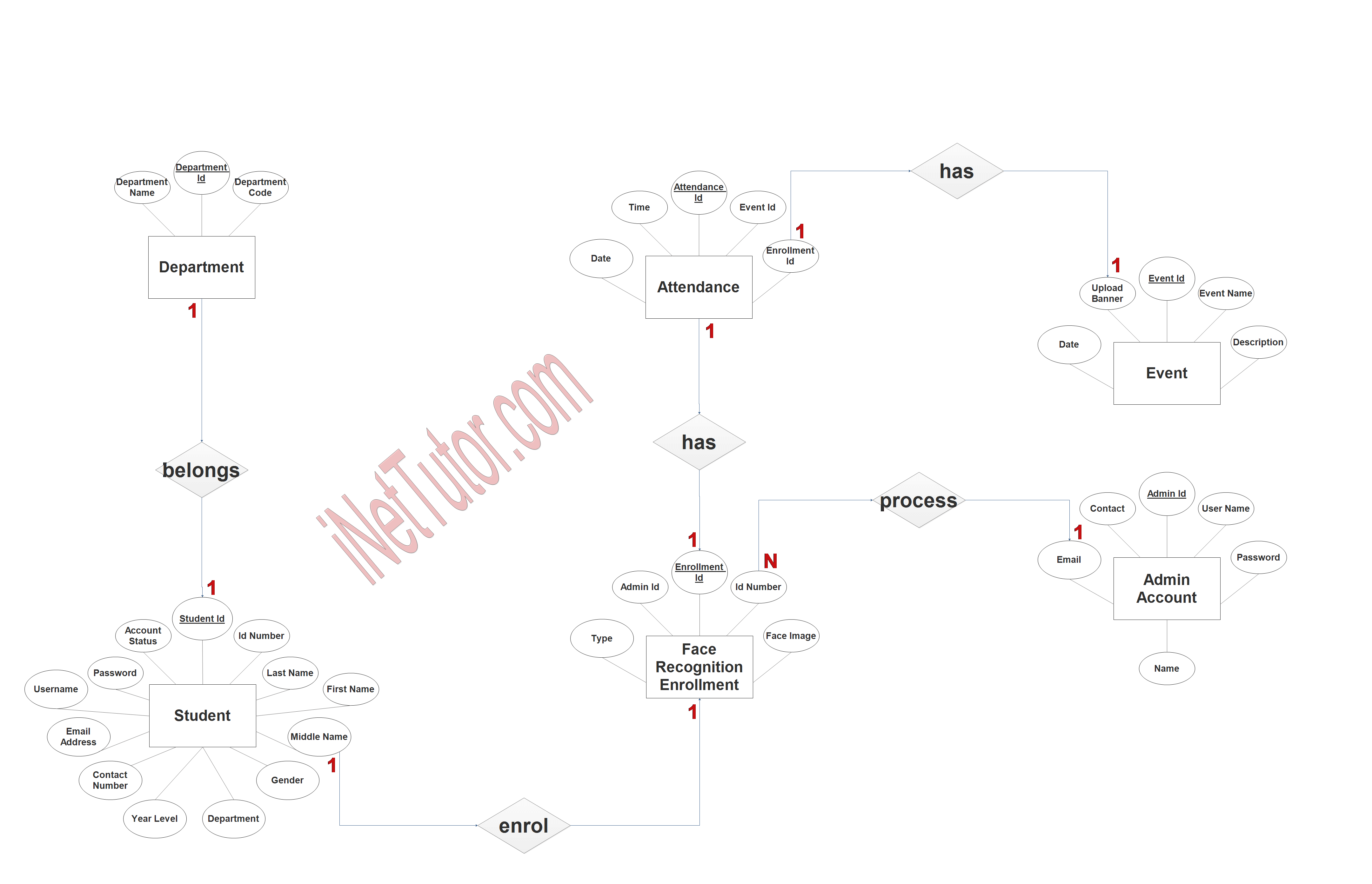
Summary
The advantage of a face recognition attendance system is that it can assist in ensuring that personnel are properly accounted for and that they are not absent from their jobs. This can assist in increasing productivity and ensuring that work is completed in a timely manner. Additionally, a facial recognition attendance system can aid in the identification of individuals who are away from work without leaving a note behind them. This can assist to guarantee that employees are not skipping work without repercussions, and it can also serve to increase morale among the workforce. Finally, a face recognition attendance system can aid in the prevention of theft and fraud by identifying individuals. It is much easier to discover suspicious behaviour and take appropriate action when employees’ whereabouts are tracked by the company. All of these factors can contribute to increased business efficiency and stability.
The creation of entity-relationship diagrams is a vital stage in the design of a database. It aids in the visualization of the data’s structure as well as the relationships between the data’s individual pieces. Making the database schema easy to build and comprehend is a significant benefit. It can also assist in the detection and correction of design flaws.
The ERD is also used as the foundation for database design models, which are derived from it. Using these models, you can see the data structure and the relationships between data pieces more clearly. In addition to assisting in the planning of how the data will be kept and accessed, it can also serve as a guide for the creation of new tables and columns in the database system itself.
In addition, we will also give you a PowerPoint or Video Presentation for the entire ER Diagram. Make sure you visit and subscribe to our YouTube channel to see the videos.
You may visit our Facebook page for more information, inquiries, and comments. Please subscribe also to our YouTube Channel to receive free capstone projects resources and computer programming tutorials.
Hire our team to do the project.
Related Topics and Articles:
Face Recognition Attendance System Application Free Download Bootstrap and PHP Script
Face Recognition Application Database Design
IPO Model Conceptual Framework of Face Recognition Attendance System
Face Recognition Attendance with SMS notification Capstone Project


